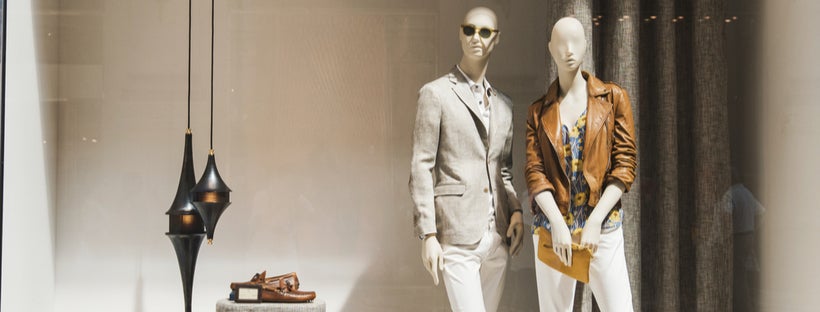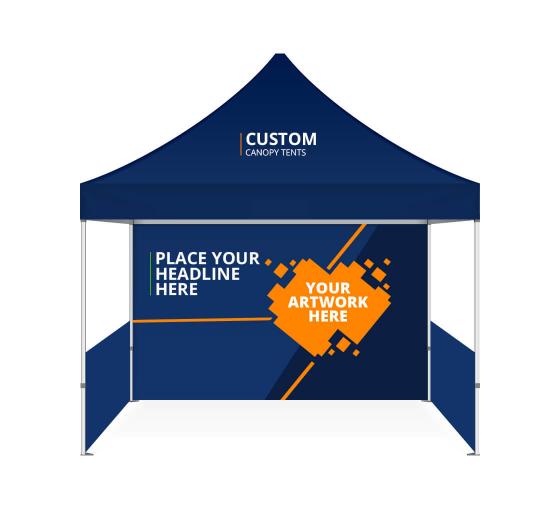The windows of your store are real estate, brimming with opportunities. Successful retail stores pay special attention to doing up their windows; providing visual charm to welcome customers in. By creating a vibrant display, you can engage the passersby and showcase your brand’s personality to potential clients.
So, what goes into creating a stunning window display? Here’s an in-depth look at how you can turn your windows into an instant pitch for your brand.
Decide the Strategy

Before you begin the work of designing your pop-up display, it’s essential to strategize. This begins with identifying your goal and your audience. Ask yourself; what needs to be communicated? Who am I trying to reach? Once you’ve answered this critical question, you can move onto your core strategy.
Generally, there’s two major approaches brands use for window displays.
First is through a utilitarian product display. Product displays showcase key products for your store right in the window. By showing off your products, you quickly communicate the kind of items you want to sell, and entice the customer to step in and explore. Product displays can also be powerful demonstration opportunities, communicating the utility of your products.
Another option is to focus on brand identity. You can use visual design and storytelling to leave an implicit impression through design. This works particularly well for products that already have an element of design built in. Businesses that sell luxury goods or are into home decor or gift shops prefer to build on their brand’s identity through their window display.
Select a Theme and Tell a Story
When creating a window display, it’s important to select a theme. This will help you create a cohesive exhibit that’s unique to each display throughout the year. Frequent choices for window displays include product launches, tie ins with other marketing campaigns, and seasonal themes.
Remember to use the power of storytelling to inform your customers of what they can expect. Tie the items together thematically, and you’ll be able to convey the emotions of your season’s collection. Your theme and design should also reflect your brand’s personality and values, making the right promises to your customers.
Plan Your Display

Before you get an exciting idea and get down to setting up your display, take the time to think through your display. Start with practical matters. It’s likely that the products you put on display will sell out quickly, so make sure you have extra inventory of those products. Ensure your staff is informed of displayed products, and can direct customers quickly to them.
Planning also means design work. Take the time to sketch out the scene on paper. List out and procure all the items you need to get the display perfect, and map out any additional marketing materials you will need to pull it off.
Use Props
Props can make a drastic difference in creating the right display. A good prop can create the story you are trying to tell and communicate the perfect message.
For example, if you run a business that sells home improvement items, you may want to invest in some furniture items and backdrops for the display. It will give your customers a vivid idea of how they can use your products in their homes.
If you need a custom prop, sourcing varies by project. On the high end, you can custom order items to find the perfect look. If you have them in your area, try reaching out to a local prop house for specific items. On a budget? Thrift store items can act as excellent props. Research your ideas and budget before sourcing; it’s best to know your limits before finalizing your design.
Place Window Graphics

Apart from expansive displays with products, you can also use graphics or window signs.
The advantage of window graphics is that you can use them for a variety of purposes – from informing the customers of ongoing offers to new product launches to conveying marketing messages. Moreover, window graphics are easy on the pocket, and can be stored for future promotions and sales.
Along with window graphics, flags can also be great sources of custom print. Flags can be easily displayed in windows, either freestanding or integrated with your display. Another option is window cling stickers. Window clings are perfect for new locations, informing passersby of store hours and the products you sell.
Place the Products at Eye Level
To create an appealing display, always ensure that the products are at eye level. At eye level, you can catch all types of window shoppers naturally through their field of vision.
To ensure the proper height for smaller products, you can use display tables or stack products on top of each other or make pyramids. Ensure that the tables match the overall vibe of your store. Several retail stores also place empty wooden boxes or crates on top of each other to get the job done. You can paint them in neutral colors or plain white to enhance the look.
Let High End Products Enjoy Some Space
If you sell expensive products, remember the golden rule of visual merchandising – less is more. Let the product breathe by not surrounding it with too many items or decor pieces. Or else, the products may end up looking cheap and not as enticing. Keeping only one product in the window display will let the viewers soak in its aesthetic glory, so keep it simple.


 Posted in
Posted in 



